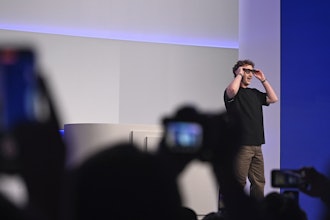3D Printing Enables Human Hair Farms
Researchers from the Columbia University Irving Medical Center have found a way to artificially grow human hair. The idea is that one day hair transplants will stop plucking follicles from the backs of patients' heads, and instead plug in these artificially-grown hair follicles that are harvested from a hair farm.
Until now, researchers have been unable to grow human hair in a lab using cells taken from the base of existing follicles. While rat and mice hairs have worked, human hairs are resistant.
The researchers turned to 3D-printing to create a mold that grows artificial hair follicles. The mold is made up of long, thin extensions that are a half a millimeter wide. Until recently, fabricating such a mold would have been impossible.
The mold is used to make 3D skin constructs. Essentially, human skin grows around the mold to create “wells.” The researchers placed hair follicles cells in the wells and then cover them with cells that produce keratin. The cells are then given a cocktail that encourages hair growth and in only three weeks, human hair follicles appeared and started creating hair.
The method still needs to be optimized before it can be commercialized and used to create new hair follicles for patients around the world.
During the average hair restoration surgery, 2,000 hair follicles are taken from the back of the head to the front and top. It's typically used by male patients whose hair loss has stabilized and who have enough hair to use.
This new technique could open up possibilities to women experiencing hair thinning or loss, burn victims, and even some applications in the pharmaceutical industry.
Robot Arms Have Tiny Robot Tongues
Researchers at the University of California, Davis have developed a robot arm that can taste.
The researchers created a robotic gripping arm that uses engineered bacteria placed in pockets in the fingers to taste for specific chemicals. The proof-of-concept soft robot is the next step towards biological-mechanical hybrid machines, or more human robots.
The new device has a complicated simplicity. The robot gripper uses a biosensing module that includes little, flexible pockets that hold an E. coli bacteria engineered to respond to the chemical IPTG. When it detects the chemical, it lights up and the electrical signal is sent to the gripper's control unit.
In tests, the gripper checked bath water for IPTG. Basically, it looks like its dipping a toe (or entire robot hand) in a tiny pool. The tests took about 10 hours, but the idea is that the hand can sense if the chemical is in the water. If it doesn’t detect the chemical, it essentially deems it safe, grabs an object (a ball), and dips it in the pool.
Right now, the work is preliminary. The biohybrid bot can only taste one thing and it can't detect changing concentrations. It's also difficult to keep the microbes stable.
According to the researchers, biohybrid systems could one day include bacteria engineered for different functions, like detecting chemicals, making polymers for repairs or even generating energy. So, one day these tiny tongues won't just taste, but they'll feed.
World’s First Long-Range Solar Car
This week, Lightyear revealed the Lightyear One, the world's first long-range solar car. Of the solar car concepts that I have seen over the years, I have to say that I'd actually drive this one. The question is: would it get me anywhere?
The Lightyear One is powered by five square meters of integrated solar cells on the roof and hood, and the cells are strong enough to withstand the weight of a grown adult walking on them. According to the company, the car has a range of nearly 500 miles (497 miles or 800 km) if you're driving during daylight. The solar roof and hood add an additional 7.5 miles/hour. In the snow, with the heat on, you get about 250 miles. Still not bad.
The car is run by four in-wheel motors and can go from 0-60 in about ten seconds
It is going to cost you a pretty penny. The car starts at about $135,313.
The company was founded in 2016 and has already sold more than 100 vehicles, according to designboom.
The Lightyear One is set to go into production in mid-2021.
This is Engineering By Design.






















